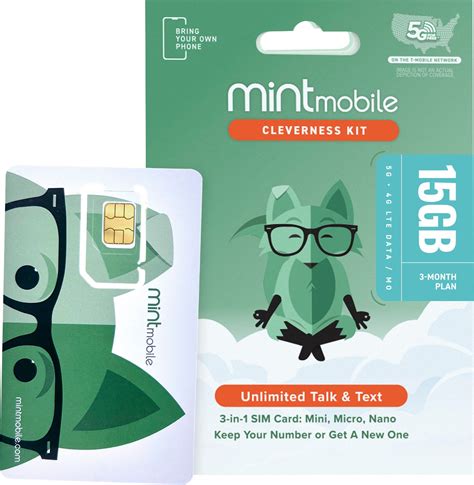5 Mint Mobile Bands

Mint Mobile, a renowned mobile virtual network operator (MVNO), offers its services using the infrastructure of major wireless network providers in the United States. One of the key aspects of choosing any mobile service provider is understanding the bands they operate on, as this directly impacts the coverage, speed, and overall user experience. Mint Mobile, leveraging T-Mobile's network, utilizes a variety of bands to deliver its services. In this article, we will delve into the specifics of the bands used by Mint Mobile, exploring their implications for users and the overall performance of the network.
Understanding Mint Mobile’s Bands

Mint Mobile’s service is built on T-Mobile’s network, which means it inherits the band structure of its parent network. T-Mobile, and by extension Mint Mobile, uses a combination of low-band, mid-band, and high-band spectrum to provide comprehensive coverage and fast data speeds. The primary bands used by Mint Mobile include Band 2 (1900 MHz), Band 4 (1700⁄2100 MHz), Band 12 (700 MHz), Band 66 (1700⁄2100 MHz), and Band 71 (600 MHz). Each of these bands has its unique characteristics and advantages, contributing to the overall network experience.
Band 2 (1900 MHz) - PCS Band
Band 2, also known as the Personal Communications Service (PCS) band, operates on the 1900 MHz frequency. This band is one of the oldest and most widely used bands in the United States. It offers a good balance between coverage and capacity, making it suitable for urban and suburban areas. However, its penetration into buildings can be limited compared to lower frequency bands, which might affect indoor coverage.
Band 4 (1700⁄2100 MHz) - AWS Band
Band 4, or the Advanced Wireless Services (AWS) band, utilizes the 1700 MHz and 2100 MHz frequencies. This band is crucial for providing 4G LTE services and is known for its high-speed data capabilities. Band 4 is widely deployed across the United States and is used by many carriers, including T-Mobile and, by extension, Mint Mobile. Its higher frequency compared to Band 2 means it might have slightly less range but offers more capacity, making it ideal for areas with high demand for data services.
Band 12 (700 MHz) - Low-Band Spectrum
Band 12 operates on the 700 MHz frequency and is considered low-band spectrum. This band is highly valued for its ability to penetrate buildings and cover rural areas effectively, providing a strong signal even in challenging environments. T-Mobile’s deployment of Band 12 has significantly improved its rural coverage, making Mint Mobile an attractive option for those living outside urban centers.
Band 66 (1700⁄2100 MHz) - Extended AWS Band
Band 66 is an extension of the AWS band, using the same 1700 MHz and 2100 MHz frequencies as Band 4 but with additional spectrum. This band is also used for 4G LTE services and offers similar benefits to Band 4, including high-speed data capabilities. The use of Band 66 by Mint Mobile helps in increasing the network’s capacity and reducing congestion, especially in areas with high user density.
Band 71 (600 MHz) - Low-Band Spectrum
Band 71, operating on the 600 MHz frequency, is another low-band spectrum used by T-Mobile and Mint Mobile. Acquired in 2017, this band has been instrumental in expanding T-Mobile’s coverage, especially in rural areas. Band 71 offers excellent penetration and range, making it ideal for providing widespread coverage with fewer cell towers. This has been a significant factor in improving Mint Mobile’s service reach and reliability across the country.
| Band | Frequency | Characteristics |
|---|---|---|
| Band 2 | 1900 MHz | Balanced coverage and capacity |
| Band 4 | 1700/2100 MHz | High-speed data, wide deployment |
| Band 12 | 700 MHz | Excellent building penetration, rural coverage |
| Band 66 | 1700/2100 MHz | High-speed data, increased capacity |
| Band 71 | 600 MHz | Low-band spectrum, excellent range and penetration |

Key Points
- Mint Mobile utilizes T-Mobile's network infrastructure, inheriting its band structure.
- The primary bands used include Band 2, Band 4, Band 12, Band 66, and Band 71, each offering unique coverage and speed benefits.
- Low-band spectrum (Band 12 and Band 71) is crucial for rural coverage and building penetration, while mid-band and high-band spectrum (Bands 2, 4, and 66) focus on urban and suburban areas, providing high-speed data services.
- The combination of these bands ensures a comprehensive network experience for Mint Mobile users.
- Understanding the characteristics of each band can help users make informed decisions about their mobile service provider based on their specific needs and locations.
As the mobile landscape continues to evolve, with advancements in 5G technology and the potential for new bands to be introduced, Mint Mobile's strategic use of its current band portfolio positions it well for future developments. By leveraging the strengths of each band, Mint Mobile can continue to offer competitive services, balancing coverage, speed, and affordability for its users.
What bands does Mint Mobile use for its service?
+Mint Mobile uses Bands 2, 4, 12, 66, and 71, leveraging T-Mobile’s network infrastructure.
Why are low-band spectrums like Band 12 and Band 71 important for Mint Mobile’s coverage?
+Low-band spectrums offer excellent building penetration and rural coverage, making them crucial for providing widespread and reliable service.
How do the different bands used by Mint Mobile impact user experience in terms of speed and coverage?
+The combination of bands ensures a balance between wide coverage, especially in rural areas, and fast data speeds, particularly in urban and suburban zones, thereby enhancing the overall user experience.



